User onboarding is all about providing the user with the value of your product — the bare minimum for user activation.
Getting your users to the 'aha! moment' where they understand how your product helps them achieve their jobs-to-be-done (JTBD) is essential for a successful onboarding experience. It encourages first-time users to become paying customers.
This article is not about user onboarding, but the key metrics you'll need to track in order to provide the best experience possible. After all, you can't improve something if you're not measuring it.
The onboarding experience impacts your product engagement, relationship, and satisfaction. Virtually any improvement in it will result in revenue growth, and help reduce churn.
Before we get to the seven metrics you should be measuring and tracking, let's see why SaaS onboarding metrics matter.
Why do SaaS onboarding metrics matter to you and your customers?
In the subscription economy that SaaS businesses typically rely on, the customer experience and success is more important than anywhere else.
When your business depends on your customers renewing their subscription on a monthly basis, you need to constantly be improving and tweaking their experience so that at the end of the month, your customer is saying "Yeah, I still need this product in my life."
Through each SaaS onboarding campaign, you want to make sure you gain product loyalty, not promiscuity. You want users to keep choosing you over and over again — not just once to play around and then jump ship.
However, trying to improve your onboarding process without knowing which key metrics to look at is like fixing a flat tire without knowing where the air's coming out from. Adding a patch wherever you think the hole might be is just a waste of resources and time.
When you know which metrics to measure, you'll know exactly where the air's coming out from and how big the patch needs to be. Wasting no resources and no time.
By measuring the right use onboarding data, you will:
- Understand and optimize your user's journey
- Prioritize the features that lead to better activation rates
- Create the right UX copy
- Develop the right self-serve or high-touch onboarding materials
- Identify friction points
- Identify best engagement times and channels
- Understand what the user needs to do to get to the value or the aha! moment
Measuring, understanding, and adjusting the onboarding key performance indicators (KPIs) will lead to your customer feeling satisfied and ready for a long-term relationship with your product.
Remember Gall's Law:
"If you want to build a complex system that works, build a simpler system first, and then improve it over time."
Which SaaS onboarding metrics you need to be checking — and how to improve them
Let's take a look at the seven most important KPIs that you definitely should be tracking to understand your user onboarding success and how to improve them.
#1. Time-to-value (TTV)
Dhaval Sarvaiya, co-founder of Intelivita, describes time-to-value, or TTV, as follows:
"The amount of time it takes for a customer to get value from your product. A shorter TTV means that customers are able to start using and benefiting from your product quicker, which can lead to higher satisfaction and retention rates."
Getting the user to see the value of your product — for them — is the most important aspect of onboarding. You need to make sure your onboarding process is giving them the technical knowledge and explanations to be able to use your product and obtain what they're looking for from it.
It's important to match the user's expectations to what you're delivering. Don't promise a product that can do X, Y, and Z, if in reality it only does A, B, and C. Promise users what it really does, and get them to it as quickly as possible.
Eithiriel DeMeré, Head of Community at Source, explains a mistake many businesses make when it comes to TTV:
"Companies tend to overwhelm their customers with too much stuff – features, tasks, integrations, enhancements, training, whatever – and the customer never gets any real value because they're never really onboarded."
How can you improve TTV?
- Understand your users' JTBD for their onboarding and what they're looking to accomplish by using your product – then show them how it's done, as quickly as possible
- Use tools like welcome screens and sign-up surveys to segment your users to decipher exactly what they're looking for. This way, you can target the onboarding experience to specific pain points and needs.
In the example below, you can see how Bonsai segments their users by their needs and interests in their onboarding flow.
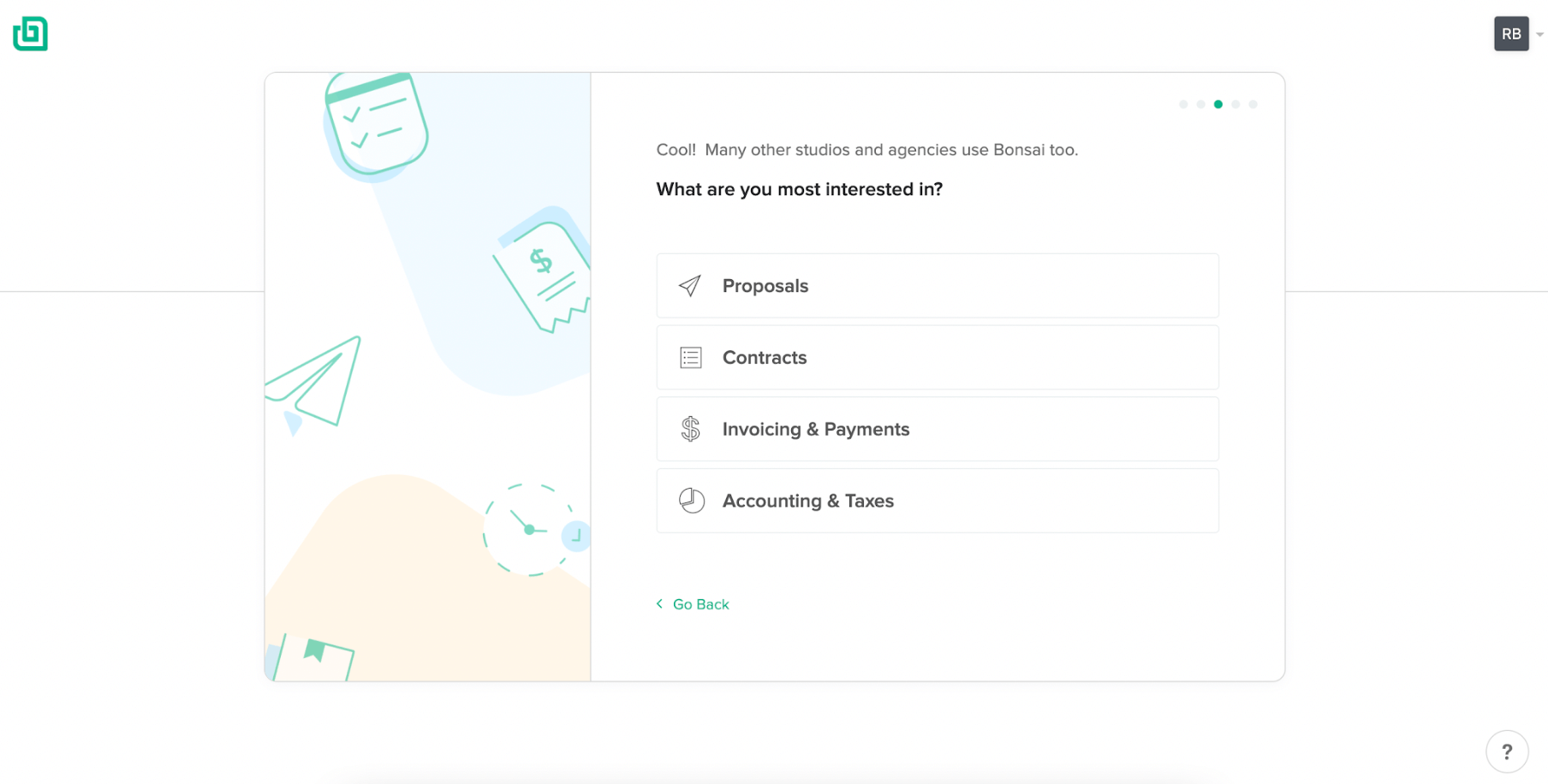
#2. Customer engagement rate (score)
Customer engagement score or rate is not measured by only one metric. Since engagement will depend on the nature of your product, you'll need to understand that first.
For example, a productivity software might consider engagement as logging in every day and using its 'tasks' feature. For other products, it might mean the amount of emails sent per week and logging in won't cut it. Understanding your product to see which actions you should be tracking to understand user engagement is fundamental.
David Watkins, Director of Customer Experience at EthOS, says:
"At the end of the day, as a SaaS company, you want your customers to renew their licenses. If a customer is consistently using your product and is happy, then it's a good sign they're going to renew."
According to the Customer Onboarding Benchmark Report 2021, lack of engagement is the second cause for churn after wrong product fit.
Make sure that you're engaging with your customers through different channels, different materials, and that they're engaging with your product properly.
Here's how to measure customer engagement rate the easy way:

Where w is the weight/importance given to an engagement event and n is the number of times the event happens.
Want to learn more? Check out our SaaS user engagement guide.
How can you improve your customer engagement rate?
- The first step to improving your customer engagement is to really understand it. Use tools that help you measure the specific metrics your product or service deems as engagement.
As Shiv Gupta says:
"Customer success software can be a lifesaver. You can find out information about a customer's usage of a product, their level of activity, their engagement score, their health, when they last logged in, etc. by using customer success software."
- Use SaaS onboarding emails to keep your customers engaged during the onboarding process
- Provide interactive walkthroughs so your user really understands how and what to do with your product
Check Ninox's example below for what an interactive walkthrough looks like
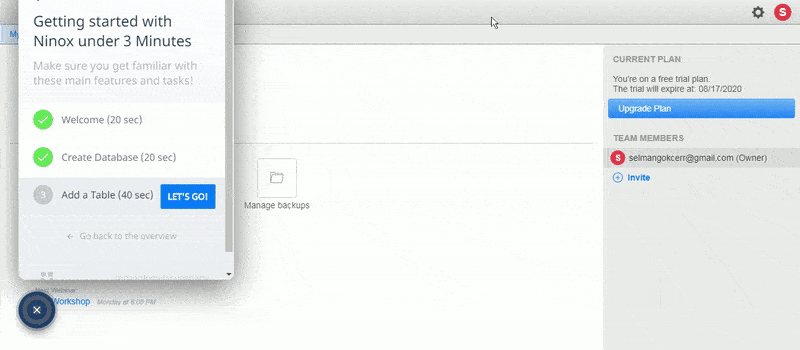
#3. Trial-to-paid conversion rate
Being able to convert free trial users into paid customers is the clearest way to find out if your customer onboarding is successful. This tells you that, not only did users find value in it, but they're willing to make an investment.
However, remember that in the subscription economy, one subscription is not enough. You want to make it a habit for them to use your product and for your product to become a lifelong solution to their needs.
You want to pay attention to free trial to paid conversion, not just new accounts. As Will Yang, Head of Growth at Instrumentl, clarifies:
"I don't consider the number of new accounts, because it's not a good indicator of how well your product is doing. A lot of companies will get new accounts by offering discounts or free trials to new customers, and these kinds of accounts don't stay with you for long. They can cause more harm than good when it comes to measuring your SaaS onboarding."
How can you improve it?
- Engaging with your users at the right time with upgrade emails is a great way to promote conversion rates. Check our article about upgrade emails so you can make the most out of them
- Using UI Modals at the right time, and as end-of-trial reminders are great for pushing users that are satisfied with your product to hit pay now
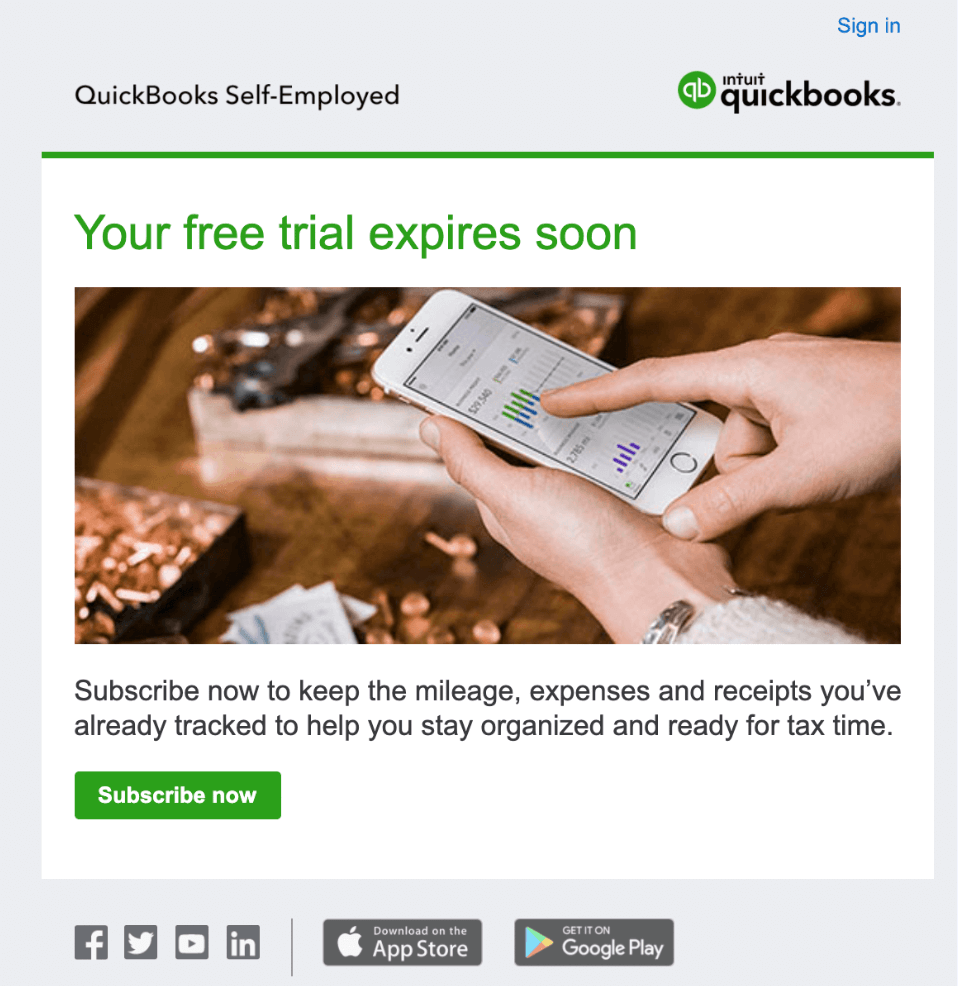
#4. Customer retention rate
Churn is an important metric for SaaS businesses. However, focusing on the customers that stay and seeing for how long can be even more meaningful for SaaS.
Retention is correlated to better growth — even more so than acquiring new customers. After all, it's cheaper to keep customers than it is to obtain new ones — studies say obtaining new customers is between 5x and 25x more expensive than retaining them — and this has a massive impact on your business finances.

To calculate user retention rate you follow this formula:

What's important about that number is to understand at what stage of the onboarding process are users dropping off, and why?
Claudiu Murariu, founder of InnerTrends, explains when you look at what stage users drop you want to find which actions the ones that finished took, and which actions the ones that dropped off missed.
"It's important to understand which elements of the product are used by people who are more likely to finish. It can help generate a lot of ideas for emails you should send during the onboarding process."
How can you improve it?
- Analyzing the stage at which users drop, and making better use of onboarding materials or walkthroughs to get users past that stage
- Using onboarding checklists or progress bars can help users see how many milestones they have completed and how many are left. This encourages them to complete the process
- Gamifying the onboarding process is another great way to make sure your users remain engaged and motivated
- Use micro surveys to get instant feedback on key onboarding actions. Figure out what's working well, or highlight what isn't, with Likert scale questions
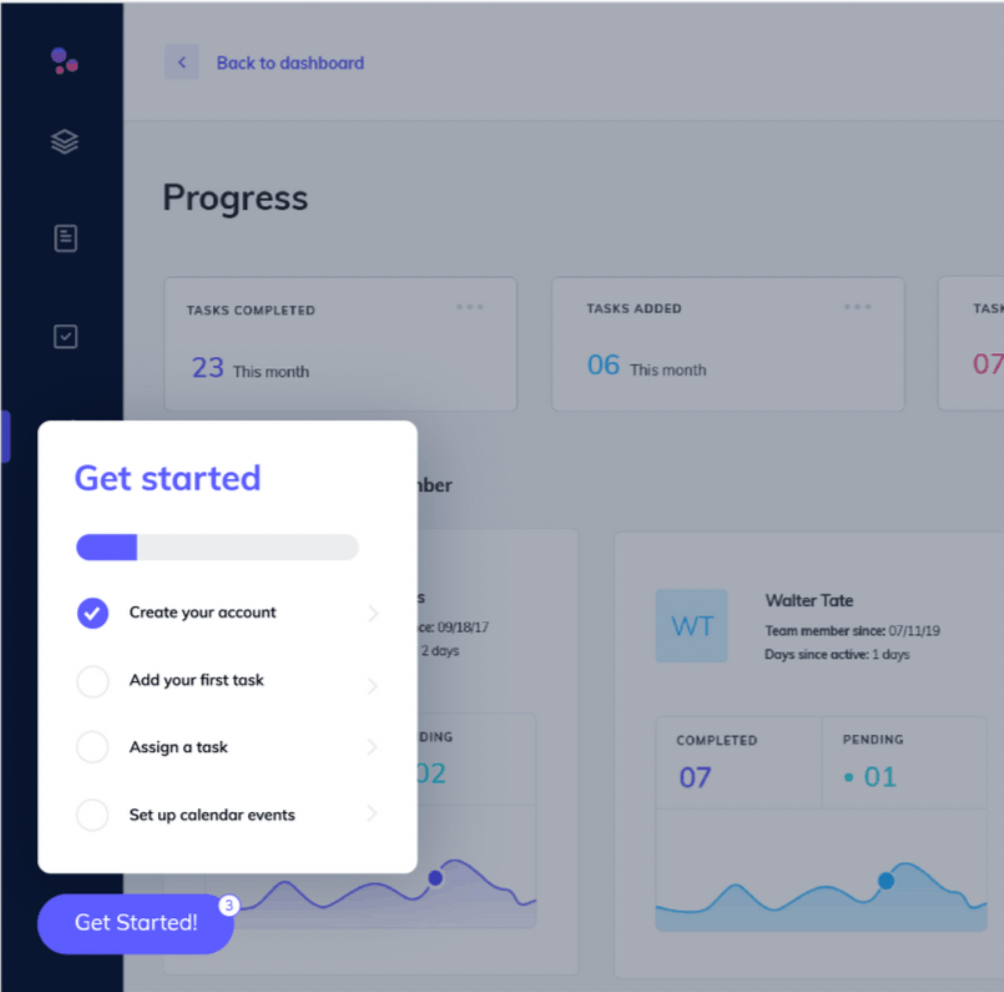
#6. Time to desired actions
The less time a user spends onboarding, the quicker they'll see value — and the less time they'll have to disengage or scope out the competition.
Make sure your onboarding time frame isn't ridiculously long, but also you don't want it so short that your users are arriving at the end of the onboarding feeling underwhelmed.
How can you improve it?
- Create onboarding materials that help the user understand your product and progress easier
- Checklists, gamification strategies, and in-app feedback surveys can help users get to a desired action quicker
#7. Customer satisfaction and feedback
Understanding how your customer feels during the onboarding process, and about your product, is fundamental to know what needs changing or improving.
Vito Peleg, founder and CEO at Atarim, shares his main metrics when analyzing his onboarding process:
"Beyond checking conversion rate, we find we're able to gain more by focusing on qualitative data (vs. just on the numbers), including but not limiting to actually taking the time to hop on calls with users who don't reach that point — as well as those that do — to understand what the main deciding factor was."
Understanding what your users think of the overall onboarding process and your product can directly help you improve it. This means talking to users that converted, and those that didn't — if they can spare you the time.
Another way to understand customer satisfaction is by analyzing the number of support tickets, and their sentiment. These are the amount of times your users have run into tricky situations, or sent complaints to your customer support team throughout their onboarding.
How can you improve it?
- Provide feedback forms throughout the onboarding experience
- Send emails when users have churned to ask them if a call to understand their reasons for leaving is possible
- Provide opportunities to give feedback via in-app surveys or emails
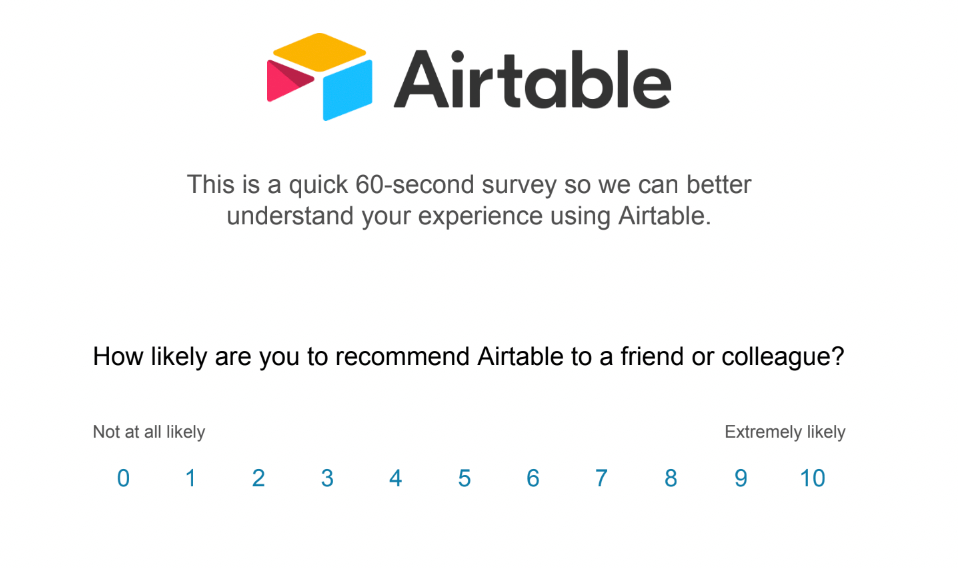
"The One Metric" approach to user onboarding
The One Metric approach provided by Claudiu Murari suggests to focus on the number of users that experience the promise of your product for the first time.
Your whole pre-sales team — product research, sales prospecting, lead generation and market nurturing — is focusing on presenting a promise of what a customer will be able to solve and do with your product. The most important thing you need to watch out for is whether or not users are arriving to that promise during your onboarding process.
"The first time you hit the promise, it's onboarding. The second time or the fifth time, it's an activation goal. And then, when you do it on a regular basis, it's a habit (retention)."
For this, it's crucial that you're setting the right expectations.
"With the wrong expectations, no matter what you technically do in your onboarding process, you'll not match what's in the user's mind. It's a lost battle."
Besides this, there's another aspect we need to keep in mind when analyzing our metrics. Let's explore.
Beware: correlation <> causation
Correlation does not mean causation, so be careful with interpreting your metrics.
For example, you may notice that users who visited the settings page then converted. Does it mean that visiting the settings page was life-changing? Should you drive new trials to the settings page in your SaaS onboarding emails?
Probably not.
This probably meant that the users that visited the settings page had a better understanding of your product or that they were following your onboarding materials better than those that didn't.
Identify what users are doing and why. From there, pinpoint which of those activities supported their conversion to paying customers, and which didn't.
Tools to gather and analyze onboarding data
The following tools will help you better analyze and gather the information for the metrics we've discussed in this article.
Userlist — use behavior data and segmentation, to create smart onboarding campaigns, and deliver the right information when your users need it the most.
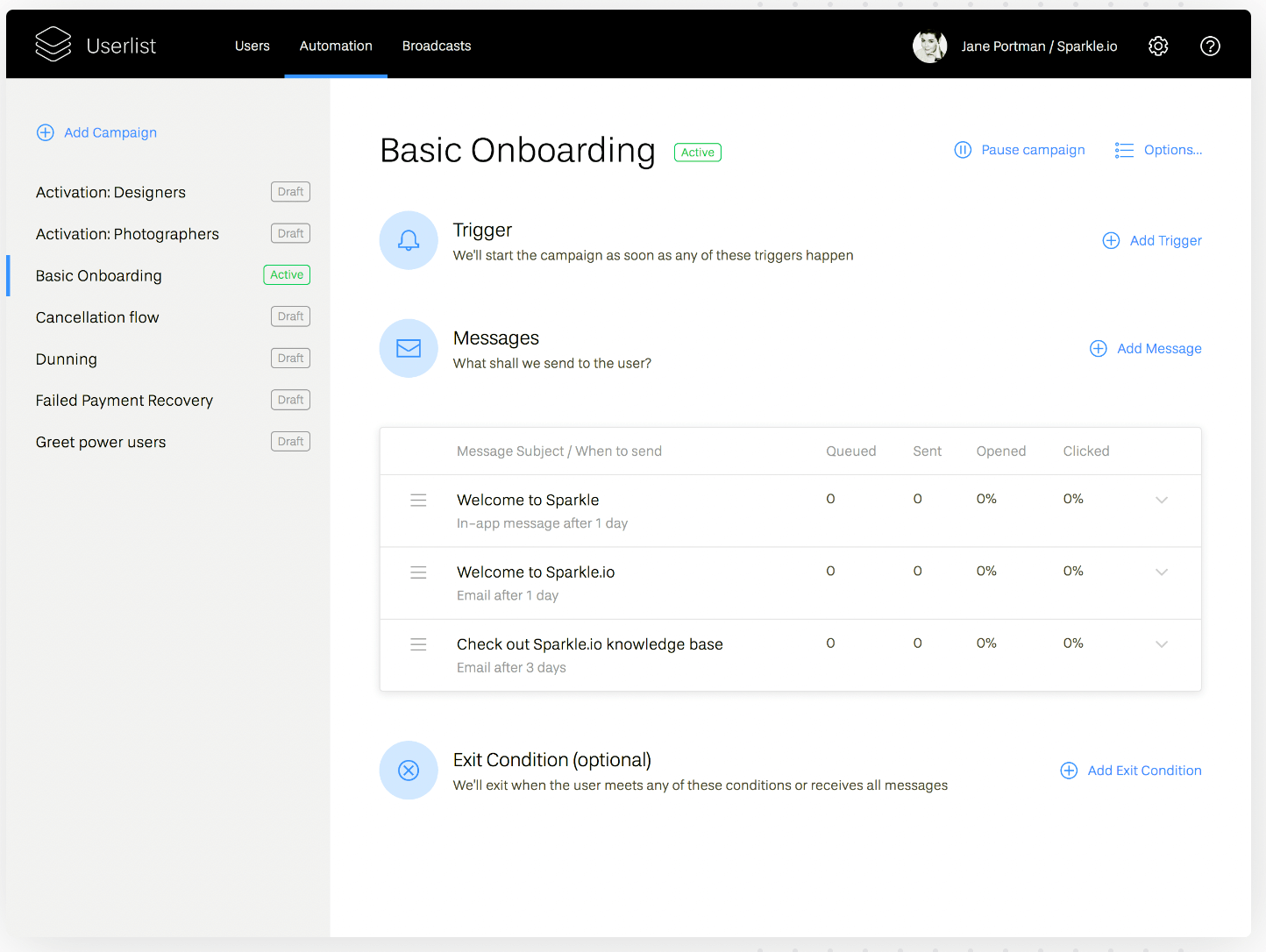
Amplitude — helps understand how customers engage with digital products through behavioral data analysis across the customer journey.
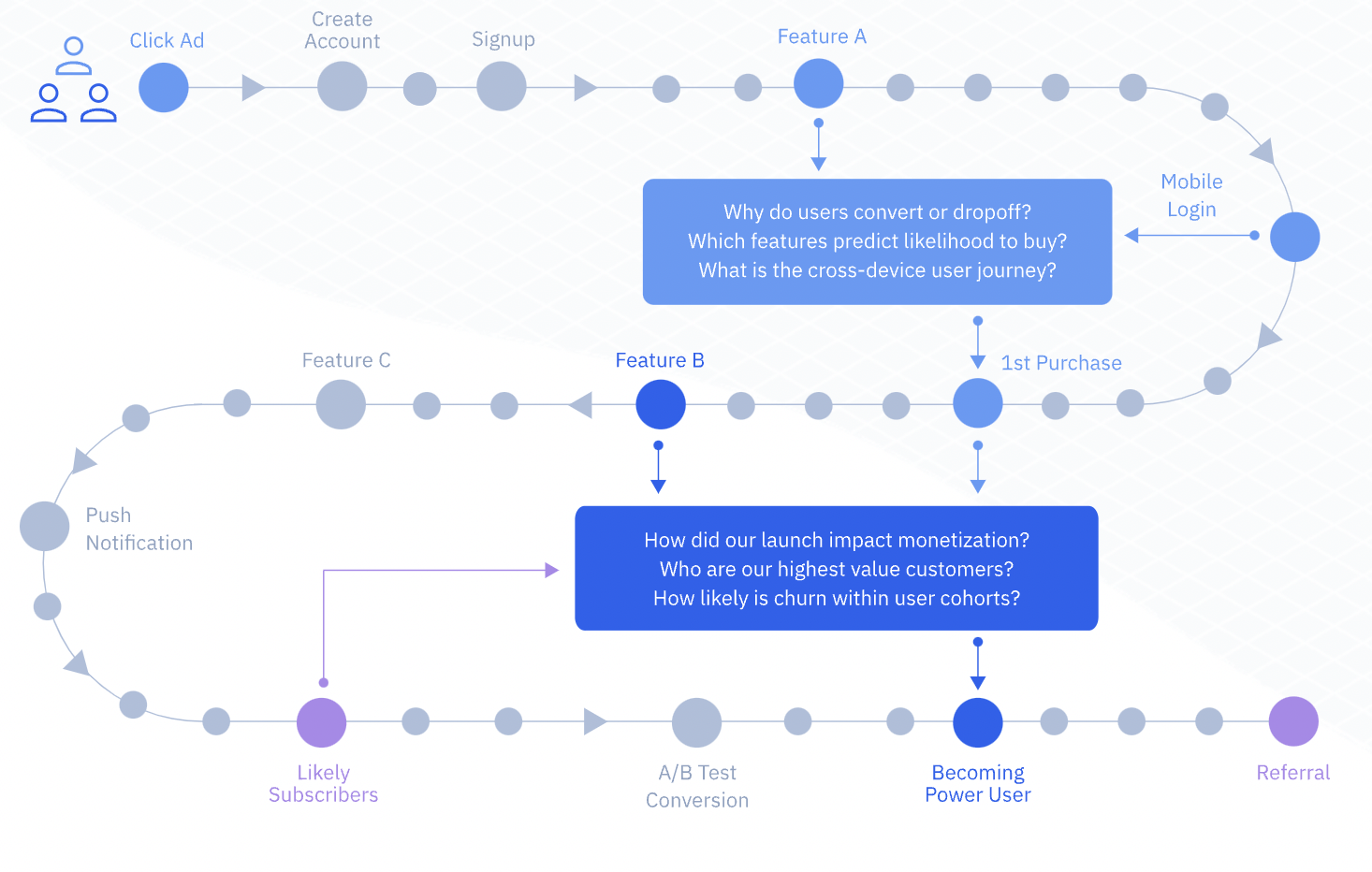
Mixpanel — helps calculate metrics at the account or company level, like product adoption, active usage, and retention.
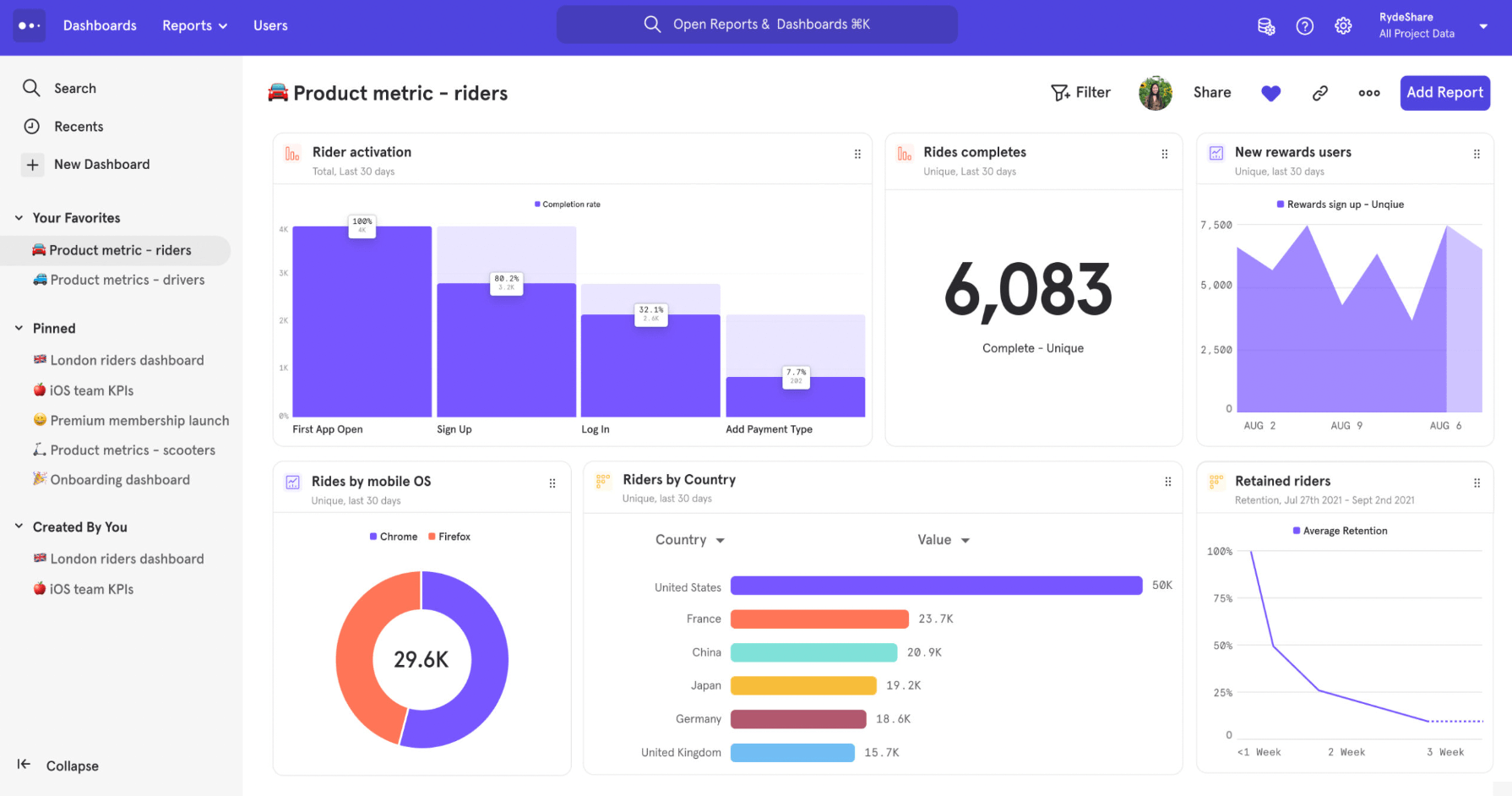
Heap — a leading digital insights platform that combines quantitative and qualitative analytics for a 360 degree view of your customer journey.
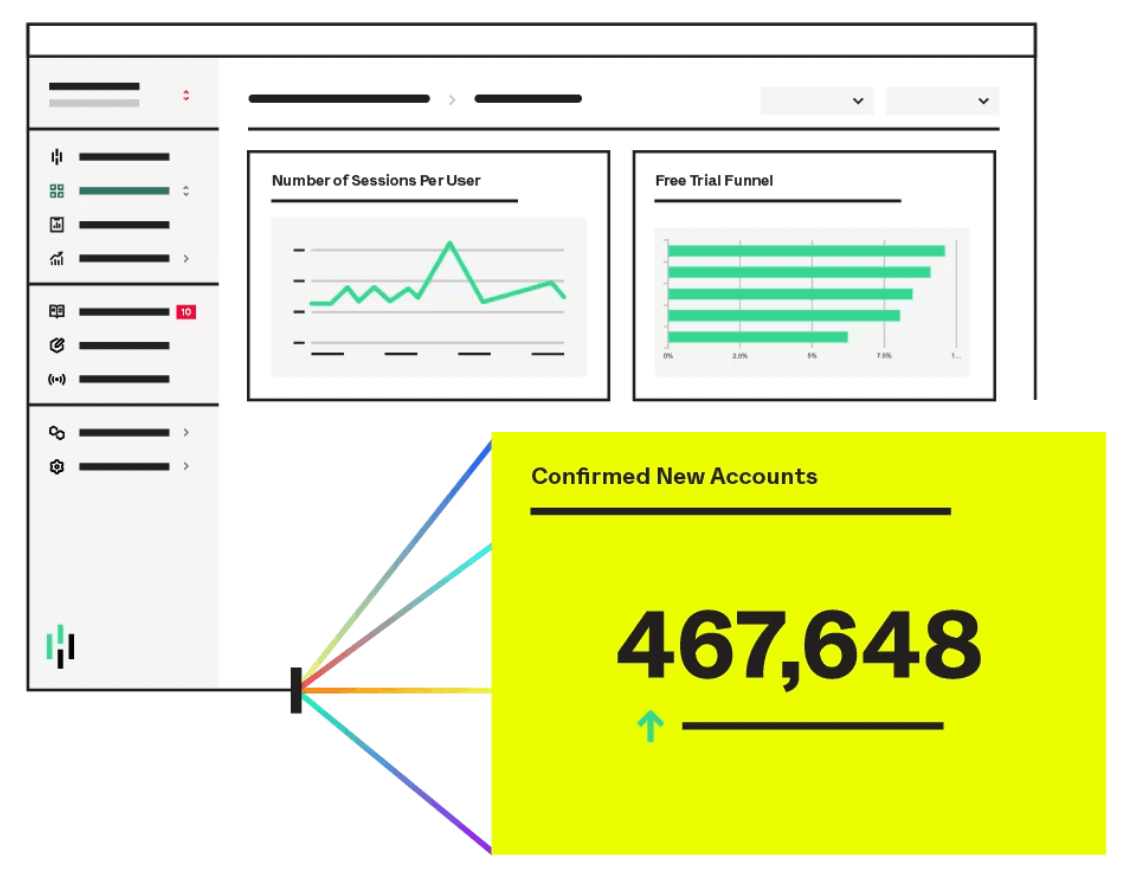
InnerTrends — helps you find onboarding optimization opportunities with pre-build reports and analytics.
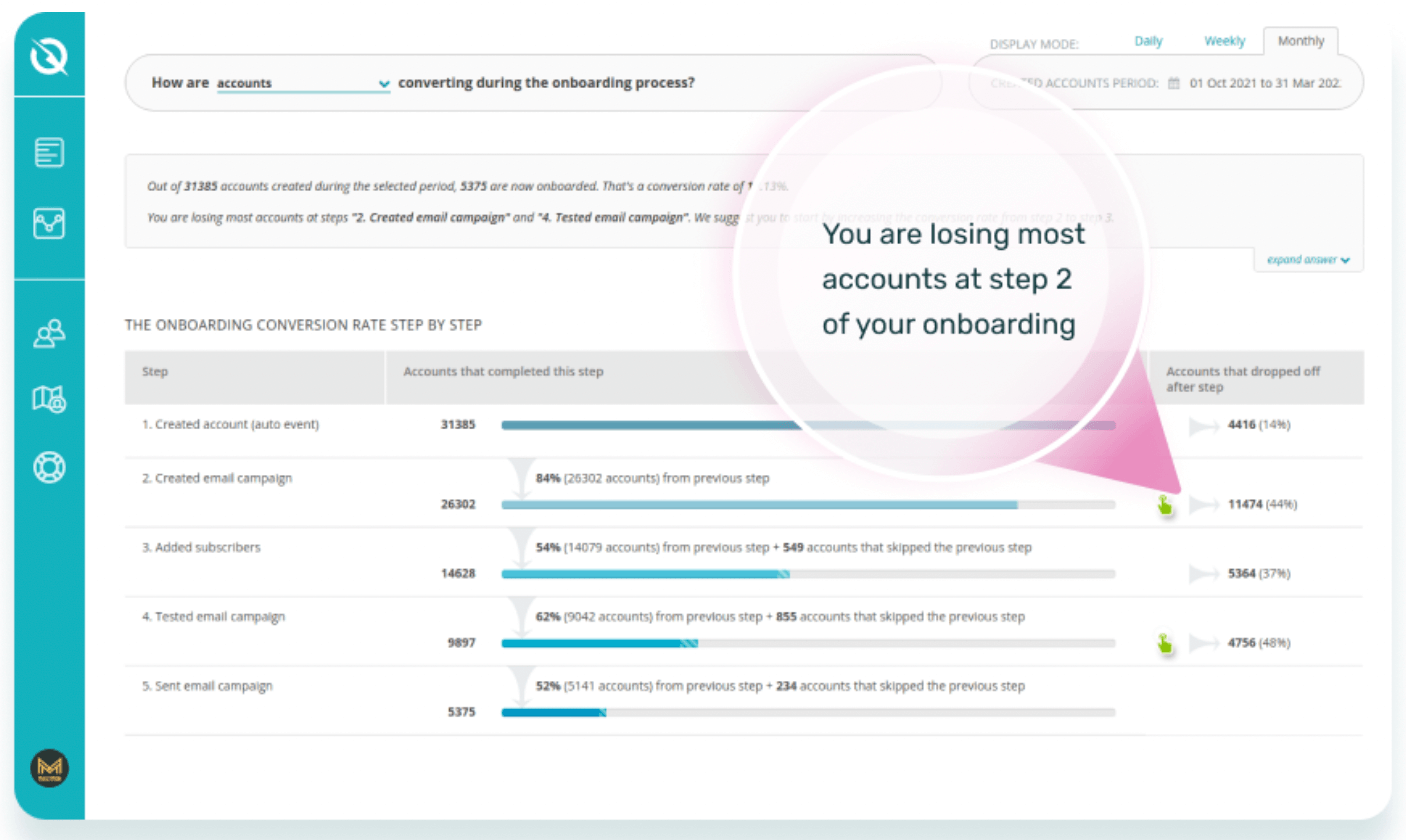
Refiner — improve your customer feedback responses with their highly configurable in-app survey widgets and automate actions based on answers.
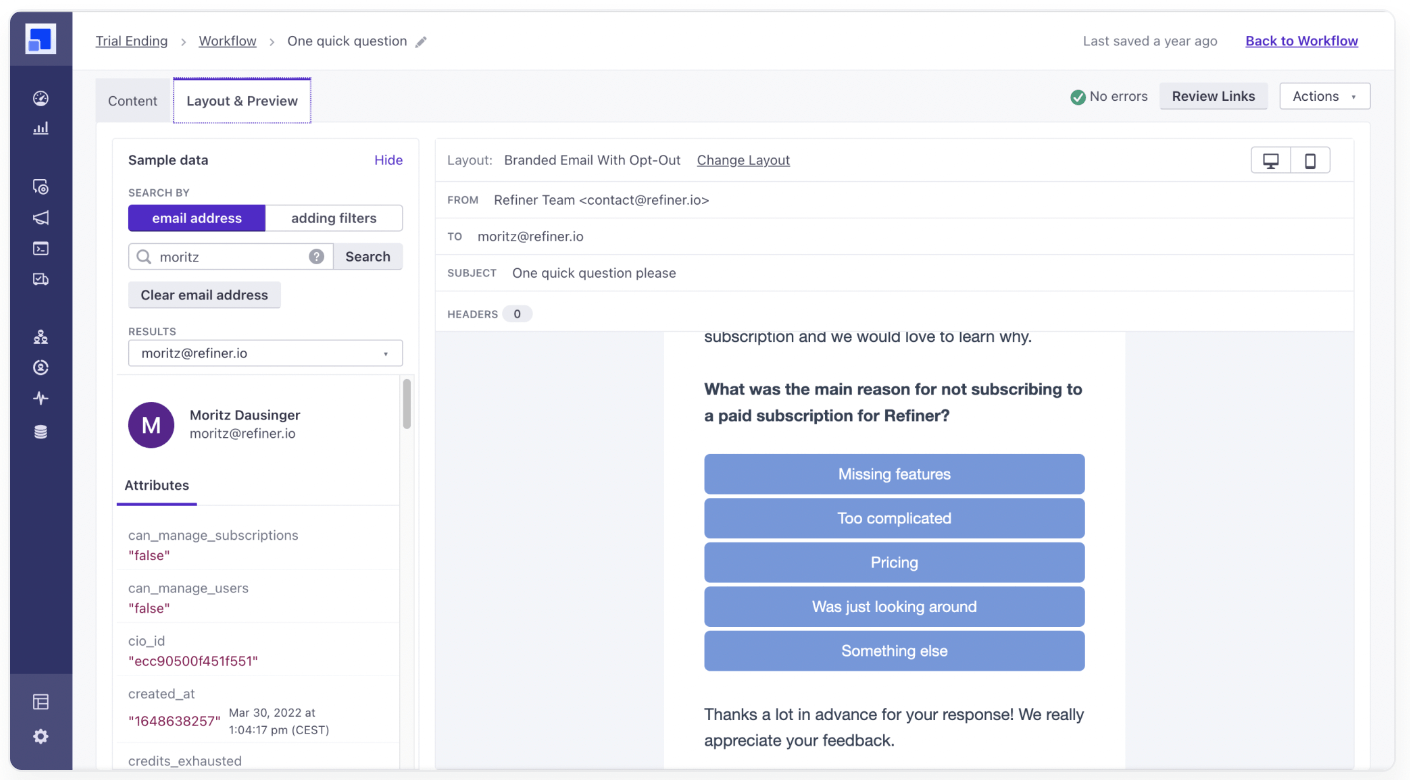
Final thoughts on SaaS onboarding metrics
Like Ameet Mehta, cofounder of SyndicationPro, sums up:
"There's no better way to onboard than having your users know exactly where they fit into the process and what they need to do next. If you can make this process seamless for them and guide them through it without confusion, you'll have a happier ending with a better onboarding process."
The importance of user onboarding and its success will only be possible when we look at the seven metrics we went through:
- Time-to-Value
- Customer engagement rate
- Free trial to paid conversion
- Customer retention rate
- Onboarding completion
- Time to desired actions
- Customer satisfaction
There are many other metrics, like lifetime value (LTV), net revenue retention (NRR), feature adoption rate, and more that many SaaS product and marketing teams track. However, the ones we covered in this article are the most important onboarding metrics you'll need to make the most out of new users and to continue guiding them to success.
Happy onboarding!





